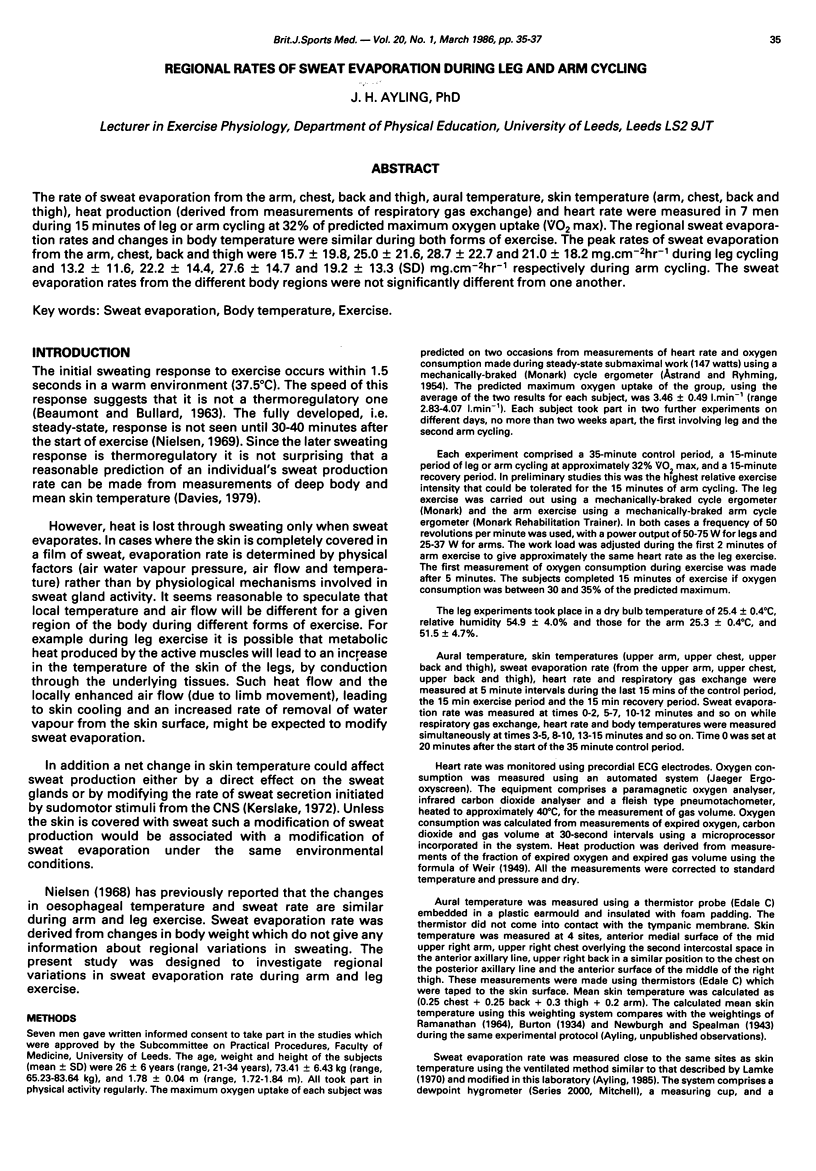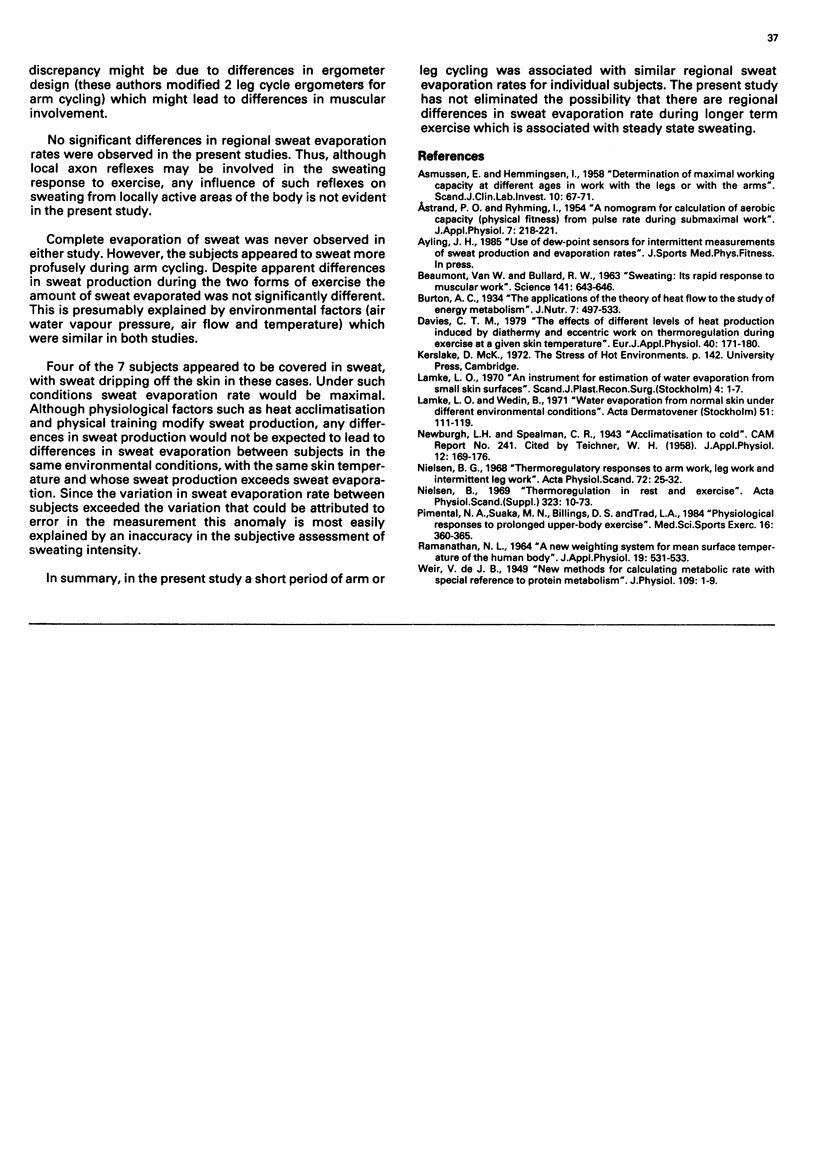Abstract
The rate of sweat evaporation from the arm, chest, back and thigh, aural temperature, skin temperature (arm, chest, back and thigh), heat production (derived from measurements of respiratory gas exchange) and heart rate were measured in 7 men during 15 minutes of leg or arm cycling at 32% of predicted maximum oxygen uptake (VO2 max). The regional sweat evaporation rates and changes in body temperature were similar during both forms of exercise. The peak rates of sweat evaporation from the arm, chest, back and thigh were 15.7 +/- 19.8, 25.0 +/- 21.6, 28.7 +/- 22.7 and 21.0 +/- 18.2 mg.cm-2 hr-1 during leg cycling and 13.2 +/- 11.6, 22.2 +/- 14.4, 27.6 +/- 14.7 and 19.2 +/- 13.3 (SD) mg.cm-2 hr-1 respectively during arm cycling. The sweat evaporation rates from the different body regions were not significantly different from one another.
Full text
PDF


Selected References
These references are in PubMed. This may not be the complete list of references from this article.
- ASMUSSEN E., HEMMINGSEN I. Determination of maximum working capacity at different ages in work with the legs or with the arms. Scand J Clin Lab Invest. 1958;10(1):67–71. doi: 10.3109/00365515809079920. [DOI] [PubMed] [Google Scholar]
- ASTRAND P. O., RYHMING I. A nomogram for calculation of aerobic capacity (physical fitness) from pulse rate during sub-maximal work. J Appl Physiol. 1954 Sep;7(2):218–221. doi: 10.1152/jappl.1954.7.2.218. [DOI] [PubMed] [Google Scholar]
- Davies C. T. The effects of different levels of heat production induced by diathermy and eccentric work on thermoregulation during exercise at a given skin temperature. Eur J Appl Physiol Occup Physiol. 1979 Feb 15;40(3):171–180. doi: 10.1007/BF00426940. [DOI] [PubMed] [Google Scholar]
- Lamke L. O., Wedin B. Water evaporation from normal skin under different environmental conditions. Acta Derm Venereol. 1971;51(2):111–119. [PubMed] [Google Scholar]
- Nielsen B. Thermoregulatory responses to arm work, leg work and intermittent leg work. Acta Physiol Scand. 1968 Jan-Feb;72(1):25–32. doi: 10.1111/j.1748-1716.1968.tb03822.x. [DOI] [PubMed] [Google Scholar]
- Pimental N. A., Sawka M. N., Billings D. S., Trad L. A. Physiological responses to prolonged upper-body exercise. Med Sci Sports Exerc. 1984 Aug;16(4):360–365. [PubMed] [Google Scholar]
- RAMANATHAN N. L. A NEW WEIGHTING SYSTEM FOR MEAN SURFACE TEMPERATURE OF THE HUMAN BODY. J Appl Physiol. 1964 May;19:531–533. doi: 10.1152/jappl.1964.19.3.531. [DOI] [PubMed] [Google Scholar]
- TEICHNER W. H. Assessment of mean body surface temperature. J Appl Physiol. 1958 Mar;12(2):169–176. doi: 10.1152/jappl.1958.12.2.169. [DOI] [PubMed] [Google Scholar]
- VAN BEAUMONT W., BULLARD R. W. Sweating: its rapid response to muscular work. Science. 1963 Aug 16;141(3581):643–646. doi: 10.1126/science.141.3581.643. [DOI] [PubMed] [Google Scholar]


